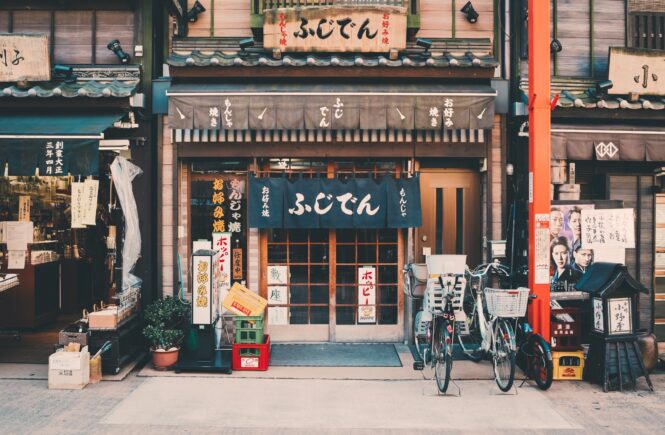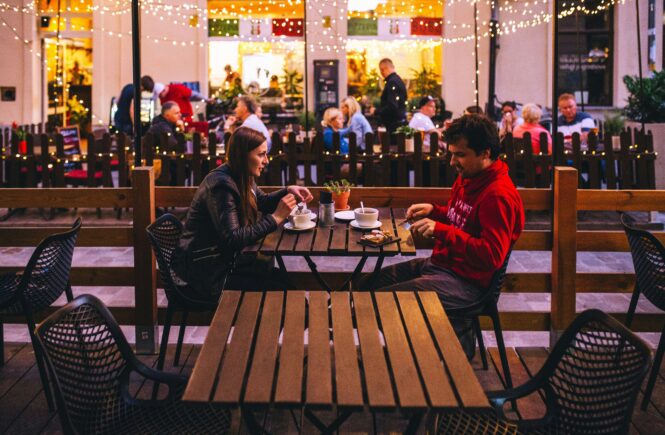Do you want to avoid rushing through your travels, ticking off tourist hotspots without truly immersing yourself in the local culture? Slow travel is the answer you’re looking for. In a world where everything moves at lightning speed, slow travel encourages us to take a step back, breathe, and savor the experience of exploring new places.
Defining slow travel
At its core, slow travel is about embracing a deeper, more meaningful way of traveling. It encourages us to stay in one place longer, connect with locals, and fully appreciate the beauty and authenticity of our surroundings. It’s about valuing the journey as much as the destination and finding joy in the little moments that often go unnoticed.
Slow travel is not just about moving slowly but also about being present in the moment. It’s about immersing ourselves in the local culture, trying new experiences, and understanding the history and traditions of the place we are visiting. It’s about creating meaningful connections with the people we meet along the way and truly understanding what makes a place unique.
Benefits of slow travel
By embracing slow travel, you open yourself up to a whole new world of possibilities. You might find yourself stumbling upon hidden gems that aren’t featured in guidebooks, discovering local cuisines that tickle your taste buds in ways you never thought possible, and forging friendships that will last a lifetime.
One of the critical benefits of slow travel is the opportunity to truly connect with a place and its people. When you spend more time in one location, you can build relationships with locals, learn their language, and gain a deeper understanding of their way of life. This enriches your travel experience and allows you to see the world differently.
Slow travel also allows for a more relaxed and stress-free journey. Instead of rushing from one attraction to another, you have the freedom to explore at your own pace, taking the time to soak in the atmosphere and appreciate the beauty around you. This can lead to greater fulfillment and well-being during your travels.
Slow travel vs. traditional tourism
Slow travel often contrasts with traditional tourism, which focuses on visiting as many places as possible within a limited timeframe. While traditional tourism has merits, slow travel offers a more intimate and immersive experience.
Traditional tourism tends to be more itinerary-driven, focusing on checking off popular attractions. This can result in a superficial understanding of a place, as you only scratch the surface of what it offers. In contrast, slow travel encourages you to go beyond the obvious and explore the lesser-known aspects of a destination.
Moreover, slow travel allows you to avoid the crowds and experience a place when it’s not overrun with tourists. This means you can enjoy a more authentic and tranquil atmosphere and have a chance to interact with locals on a deeper level. These connections and experiences often leave a lasting impression and create lifelong memories.
How to embrace slow travel
Embracing slow travel starts with a mindset shift. It’s about letting go of the need to see and do everything and instead focusing on quality over quantity. Here are some practical tips to help you embrace the slow travel philosophy
1. Choose your destination wisely
Opt for places known for their slower pace of life, rich cultural heritage, and natural beauty. Look for destinations offering various activities and experiences, allowing you to fully immerse yourself in the local culture.
2. Extend your stay
Instead of hopping from one city to another, consider staying in one place for an extended period. This will allow you to truly get to know the destination and its people and establish a routine that enables you to live like a local.
3. Immerse yourself in the local culture
Engage with the local community by participating in cultural events, visiting local markets, and trying authentic cuisine. Learn a few basic phrases in the local language to show respect and genuinely connect with the locals.
4. Slow down your itinerary
Avoid overloading your schedule with too many activities and sightseeing. Instead, leave ample time for relaxation, exploration, and spontaneous adventures. Allow yourself to get lost in the streets, stumble upon hidden gems, and have meaningful encounters.
5. Travel responsibly
Be mindful of your impact on the environment and the local community. Choose eco-friendly accommodations, support local businesses, and respect the local customs and traditions. Leave a positive footprint wherever you go.
Slow travel destinations around the world
Slow travel can be embraced in any corner of the world, but certain destinations lend themselves particularly well to this philosophy. Here are some examples of slow travel destinations known for their relaxed pace and rich cultural heritage.
• Tuscany, Italy
Tuscany offers the perfect setting for slow travel with its rolling hills, picturesque vineyards, and charming villages. Explore the countryside by bike or on foot, indulge in local wines and cuisine, and immerse yourself in the region’s rich history and art.
• Kyoto, Japan
Known for its traditional temples, beautiful gardens, and serene atmosphere, Kyoto is a haven for slow travel. Take part in a tea ceremony, wander through the bamboo forests, and witness the beauty of cherry blossoms in spring.
• Ubud, Bali
Nestled in the heart of Bali’s lush countryside, Ubud is a paradise for those seeking a slower pace of life. Explore the rice terraces, try your hand at traditional crafts, and rejuvenate your mind and body with yoga and meditation.
• Cusco, Peru
As the gateway to Machu Picchu, Cusco is often overlooked as a destination in its own right. However, this ancient Inca city has a charm of its own, with its cobblestone streets, vibrant markets, and fascinating history. Take the time to explore the city’s hidden corners and connect with the local Quechua culture.
• Ladakh, India
Situated in the Himalayas, Ladakh is a remote region known for its breathtaking landscapes, monasteries, and vibrant Tibetan Buddhist culture. Slow travel in Ladakh means exploring the remote villages, trekking through the mountains, and immersing yourself in the local way of life.
Slow travel tips for budget travelers
Contrary to popular belief, slow travel doesn’t have to break the bank. In fact, it can be a more budget-friendly way to explore the world. Here are some tips for embracing slow travel on a budget.
1. Choose affordable destinations.
Look for destinations where the cost of living is lower, such as Southeast Asia, Eastern Europe, or parts of South America. These regions offer a wealth of experiences at a fraction of the cost compared to more expensive destinations.
2. Consider long-term rentals.
Instead of staying in hotels or guesthouses, consider renting an apartment or a room through platforms like Airbnb or local rental agencies. This can often be more cost-effective, especially for longer stays.
3. Cook your own meals.
Eating out can quickly add up, especially if you’re traveling for an extended period. Take advantage of local markets and grocery stores to cook your own meals. Not only will this save you money, but it will also allow you to experience local flavors more authentically.
4. Use public transportation.
Instead of relying on taxis or rental cars, opt for public transportation whenever possible. This saves money and gives you a chance to experience the local way of life and interact with locals.
5. Take advantage of free activities.
Many destinations offer a range of free or low-cost activities, such as walking tours, museum days, or cultural festivals. Research ahead of time to discover what’s happening during your visit and take advantage of these opportunities.
Slow travel and sustainability
In addition to the personal benefits, slow travel also aligns with the principles of sustainable tourism. By staying in one place longer, you reduce your carbon footprint by minimizing transportation and accommodation-related emissions. Additionally, supporting local businesses and communities helps distribute tourism’s economic benefits more equitably.
Slow travel also allows for a deeper appreciation of the natural environment and encourages responsible travel practices. By immersing yourself in the local culture, you better understand the importance of preserving the environment and supporting sustainable practices.
Slow travel experiences and activities
Slow travel offers a wide range of experiences and activities beyond typical tourist attractions. Here are some ideas to inspire your slow travel adventure.
• Culinary exploration
Take a cooking class, visit local markets, and try traditional dishes and even exotic foods. Food is a powerful way to connect with a culture and explore the flavors and ingredients unique to a particular region.
• Nature immersion
Go hiking, biking, or kayaking in natural parks and reserves. Explore the local flora and fauna, and take the time to appreciate the beauty of the natural world.
• Art and culture
Visit local museums, galleries, and theaters. Attend traditional performances or festivals to get a glimpse into the artistic and cultural heritage of a place.
• Volunteering
Engage in meaningful volunteer work that benefits the local community. This could involve teaching English, working on conservation projects, or assisting in community development initiatives.
• Slow adventures
Take part in activities that allow you to delve deeper into a destination, such as long-distance hiking, multi-day cycling tours, or sailing trips. These adventures give you a chance to slow down, connect with nature, and fully immerse yourself in the journey.
Slow travel accommodations and transportation options
Slow travel accommodations are often characterized by their authenticity and connection to the local community. Here are some options to consider.
• Homestays
Stay with a local family and experience their way of life firsthand. This provides a unique cultural experience and allows you to build relationships and gain insights into the local customs and traditions.
• Guesthouses and bed & breakfasts
These smaller, family-run establishments offer a more personal touch and often provide valuable recommendations for off-the-beaten-path experiences.
• Eco-lodges
Choose accommodations that prioritize sustainability and environmental conservation. These establishments often blend seamlessly into their natural surroundings and offer opportunities for eco-friendly activities.
• Farm stays
Stay on a working farm and participate in daily activities, such as harvesting crops or tending to animals. This allows you to experience rural life and gain a deeper appreciation for the local agricultural practices.
When it comes to transportation, slow travel encourages the use of more sustainable options.
• Walking and cycling
Explore the destination on foot or by bike whenever possible. This reduces your carbon footprint and allows you to fully immerse yourself in the surroundings and discover hidden gems along the way.
• Public transportation
Utilize buses, trains, and boats to get around. This reduces traffic congestion and gives you a chance to interact with locals and experience the destination from a different perspective.
• Slow travel itineraries
Plan your itinerary to minimize long-haul flights and maximize the use of slower, more sustainable modes of transportation. This could mean opting for overland travel or combining multiple regional destinations to reduce the number of flights.
Why slow travel is worth considering
Slow travel offers a refreshing alternative in a world that often values speed and efficiency. By embracing this philosophy, you can transform your travel experiences into meaningful, enriching journeys that leave a lasting impact. Slow travel encourages you to connect with the people and places you encounter, to immerse yourself in the local culture, and to appreciate the beauty of the world around you.
So, if you’re ready to trade rushed itineraries for a more relaxed and meaningful adventure, join the slow travel movement. Explore at your own pace, soak in the rich tapestry of every place you visit, and create memories that will stay with you long after you return home.


